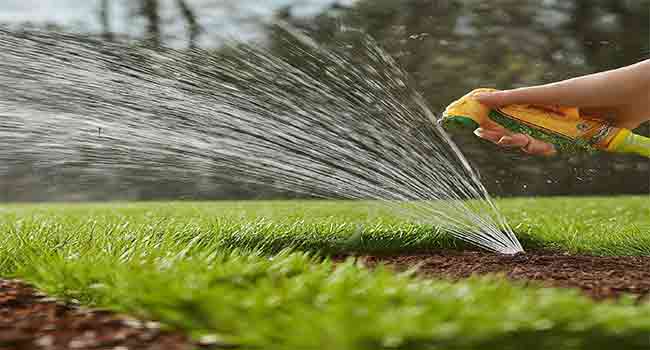Transforming a bare patch of earth into a lush, green lawn is a rewarding endeavor, but it all begins with a tiny seed and the question that lingers in every gardener’s mind: how long does it take for grass seed to germinate? The answer, as with many things in nature, is: it depends. While the average germination time ranges from 7 to 14 days, numerous factors influence the speed at which your lawn-to-be will sprout.
Factors Influencing Grass Seed Germination Time:
Each tiny seed holds the potential for a vibrant blade of grass, but the speed at which it realizes that potential depends on several key factors:
-
Grass Seed Type: Different grasses have their own unique timelines. Cool-season grasses, favored in temperate climates, generally germinate faster than warm-season varieties, which thrive in hotter regions. For example, perennial ryegrass, a popular cool-season choice, can sprout in as little as 5 days, while warm-season Bermuda grass might take 10-30 days.
-
Soil Temperature: Think of soil temperature as the thermostat for your grass seed. Cool-season grasses prefer a range of 10-24°C (50-75°F), while warm-season varieties need warmer soil, typically 21-32°C (70-90°F). Investing in a soil thermometer can help you ensure optimal conditions for germination. A recent study published in the Journal of Turfgrass Science emphasized the importance of soil temperature, noting that even a few degrees can significantly impact germination speed.
-
Moisture: Consistent moisture is the lifeblood of germinating seeds. But beware of overwatering! Soggy soil can suffocate seeds and hinder growth. Aim for damp but not saturated soil, and water gently in the morning to allow for drying during the day.
-
Sunlight: Like most plants, grass needs sunlight to photosynthesize and grow. Most varieties require at least 6 hours of direct sunlight daily. If your lawn area is shaded, consider shade-tolerant grass types like fine fescue.
-
Seed Age & Quality: As seeds age, their viability decreases. Always check the expiration date on your seed package and opt for fresh, high-quality seeds whenever possible. Certified seeds often have higher germination rates and can save you time and frustration in the long run.

When to Plant Grass Seed
Planting at the right time can make a world of difference. Here’s a general guideline:
| Region | Cool-Season Grasses | Warm-Season Grasses |
| Northern Climates | Early fall or early spring | Late spring or early summer |
| Southern Climates | Fall | Spring |
| Temperate Climates | Spring or fall | Late spring or early summer |
It’s crucial to consult local resources, such as your regional agricultural extension service, for specific planting recommendations tailored to your area’s climate and weather patterns.
How to Choose the Right Grass Seed:
Choosing the right grass seed is like choosing the right foundation for your home. It sets the stage for a healthy, beautiful lawn. Here’s what to consider:
- Climate: Match your grass type to your region’s climate. Cool-season grasses are resilient in areas with cold winters, while warm-season grasses thrive in warmer regions.
- Sun Exposure: Assess how much sun your lawn receives throughout the day and choose a sun-loving or shade-tolerant variety accordingly.
- Desired Look and Use: Do you envision a lush, manicured lawn for relaxing, or a hardy turf for active play? Consider the texture, color, and traffic tolerance of different grass varieties.
- Water Needs: In water-scarce regions, drought-tolerant grasses are a wise choice.
- Local Advice: Seek recommendations from local garden centers or experts familiar with your area’s specific conditions.
Troubleshooting and Expert Tips:
Even with careful planning, challenges can arise. Here’s how to troubleshoot common issues and ensure your grass seed thrives:
- Slow Germination: Double-check your soil temperature and moisture levels, and ensure your seeds are fresh and viable.
- Uneven Growth: Level the soil before seeding and apply water evenly with a sprinkler or soaker hose.
- Yellowing Seedlings: This could be a sign of overwatering or nutrient deficiency. Let the soil dry out slightly between waterings and consider applying a starter fertilizer according to package directions.
- Pest Damage: Birds are notorious for snacking on grass seed. Protect your investment with netting or other deterrents.
- Patience is Key: Germination takes time! Don’t get discouraged if you don’t see results immediately. Follow the tips above, and soon you’ll be rewarded with a vibrant green lawn.

FAQ: Your Grass Seed Germination Questions Answered
How long does it REALLY take for grass seed to germinate in the USA?
The average germination time is 7-14 days, but it varies widely depending on the grass type, soil temperature, moisture, and other factors. Cool-season grasses like ryegrass and fescue generally germinate faster than warm-season grasses like Bermuda and zoysia.
Can you overwater grass seed?
Yes, it’s possible to overwater grass seed. Signs of overwatering include yellowing blades, mushy soil, and fungal growth. Allow the soil surface to dry slightly between waterings.
What temperature is too cold for grass seed to germinate?
Cool-season grasses can germinate in soil temperatures as low as 50°F (10°C), but germination slows down significantly below this threshold. Warm-season grasses require warmer soil temperatures, ideally above 70°F (21°C) for optimal germination.
How do I know if my grass seed is germinating?
You’ll first notice the emergence of the radicle (primary root), followed by the coleoptile (protective sheath around the shoot). Soon after, the first true leaves will appear.
Why is my grass seed not germinating?
Several factors could be at play, including insufficient moisture, improper soil temperature, old or low-quality seed, planting too deeply, or pest damage. Review the troubleshooting tips in this guide for solutions.
Can I plant grass seed over existing grass?
While it’s possible to overseed an existing lawn, it’s generally not recommended for establishing a new lawn. The existing grass can compete for resources and hinder the germination and growth of new seedlings.
How often should I water grass seed?
During germination, water frequently enough to keep the soil consistently moist but not soggy. This may mean watering several times a day, especially in hot weather. Once the grass is established, you can reduce the frequency and increase the amount of water per session.
When can I mow my new grass?
Wait until the new grass reaches a height of 3-4 inches before mowing for the first time. Use a sharp mower blade and cut no more than 1/3 of the grass height at a time.
Can I fertilize new grass seed?
While it’s not necessary to fertilize immediately after seeding, you can apply a starter fertilizer formulated for new lawns once the seedlings have emerged and are actively growing. Follow the product label instructions carefully.
What are the best types of grass seed for my region?
Consult the table above for recommendations based on your region (Northern, Southern, or Transition Zone) and consult with local experts for personalized advice.
Remember: Patience is key when it comes to grass seed germination. By understanding the factors that influence the process and providing proper care, you’ll be well on your way to enjoying a beautiful, healthy lawn.
Conclusion:
With the right knowledge and a little patience, you’ll soon have a lush, green lawn to enjoy, no matter where you live. Remember, the journey from seed to lawn is a rewarding one, and understanding the germination process is the first step to success.
Read More
Grass Seed Types Demystified: Your Path to a Dream Lawn
How Long Grass Seed Take to Germinate? Comprehensive Guide
Grass Growth Temperatures Revealed: Lush Lawn in Any Climate
Does Grass Seed Go Bad Revitalize Your Lawn
Unbeatable Grass Seed for Clay Soil Success
Thriving Lawns: Master Grass Seed Rates Per Acre

